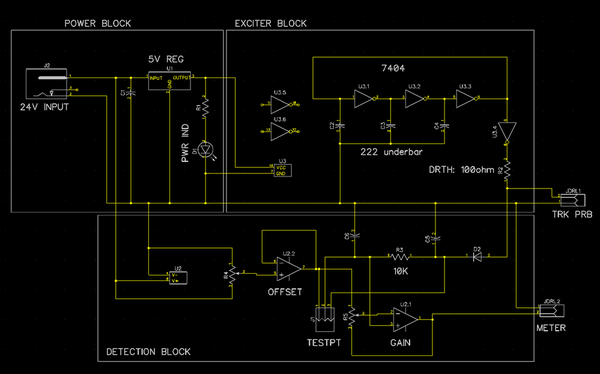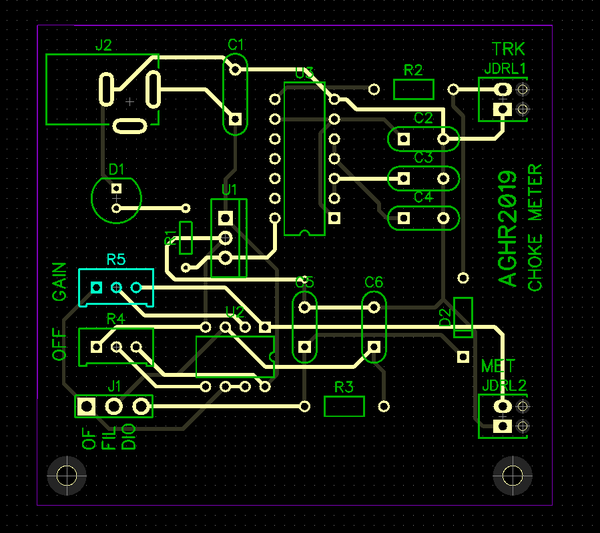Hi All,
Here's a new project we just finished designing at AGHR I thought I'd share.
I think a lot of people here on the OGR forum already understand that the low impedance of many parallel connected light bulbs from the passenger cars have an adverse effect on the DCS packet excursion voltage. The packet excursion voltage is reduced from full scale to the voltage divided result of the total parallel bulb resistance over the sum of the total parallel bulb resistance plus the Thevenin equivalent output impedance of the DCS driver (TIU or Explorer).
V_train = R_Train/(R_DCS+R_Train) * V_DCS
We've been having grief in our AGHR club where folks come in and pile 5-10 older passenger cars on the layout, and suddenly the DCS signal excursion drops well below the logic levels where the decoders can work reliably. The normal way people recommend to solve this effect is to convert the lighting in passenger cars to LEDs. The Thevenin equivalent of the LED is quite high (Kohm range) and so it doesn't create such an obnoxious voltage divider. The thing is LEDs change the look of a train and a lot of folks don't like that, so we've instead started to put series chokes (100uH ish) in all the passenger cars, so they can still keep the light-bulb look since the 60 Hz goes right through, but while also allowing the passenger car to retain a high reactance so the Thevenin impedance in the MHz frequency range where DCS operates stays high.
As we started adding chokes everywhere it became easy to loose track of which piles of passenger cars have and have not had the choke inserted yet. This is not super easy to measure on the layout since the DCS packets are super short (few ms) and you need an oscilloscope to see whats going on. Also some passenger cars are complicated and have parallel connections so even if you put a choke at one pickup, a low impedance path is still presented at the second.
To overcome this we invented the super useful AGHR choke-meter with schematic shown here:
How it works:
Not too complicated... We take in 24V (needed to drive the display) and regulate 5V with a good old LM7805 regulator. Going from 24V to 5V is a lot of drop so that's going to need a heat sink. From there we use a ring oscillator built out of a good old 7404 hex inverter (HCT variant) and just load it with shunt capacitance until it oscillates at the same frequency as the spreading rate of DCS (About 3.25 MHz). If the tuning is a little off it's not a big deal, as long as it's not orders of magnitude away. After the ring oscillator we have a 100 ohm series to protect against shorting the 7404 output, and then connect to the the center rail of a test track. We also use a super simple diode envelope detector (I use a 1n4148 diode but it probably doesn't matter). Then I just have a single OP stage to pull out the offset and give us some gain. I went with an LM358 but probably any old thing could work (LM741, LM318, LM356, ...). Finally I just go out to a volt meter. I found these nice self-powered ones on Amazon (VOLTMETER). The only trick is since they are self-powered you need to tune the offset so they sit above 3V.
Anyways wrap it into a nice board with a few connectors and it's done.
Does it work? (Of course it does or I wouldn't be posting). Here's an MTH subway car( without chokes) and one of my Weaver cars with the nice LED kit from GRJ that has a choke built in:
So the basic idea is we just tell folks to measure their cars and if the excursion is under 10V, they need to put chokes or LEDs before they can run trains. Super simple, but really really good at eliminating the signal loading issues in a club environment.
Yes, basically this is just a ohm meter at 3.2MHz instead of DC.









